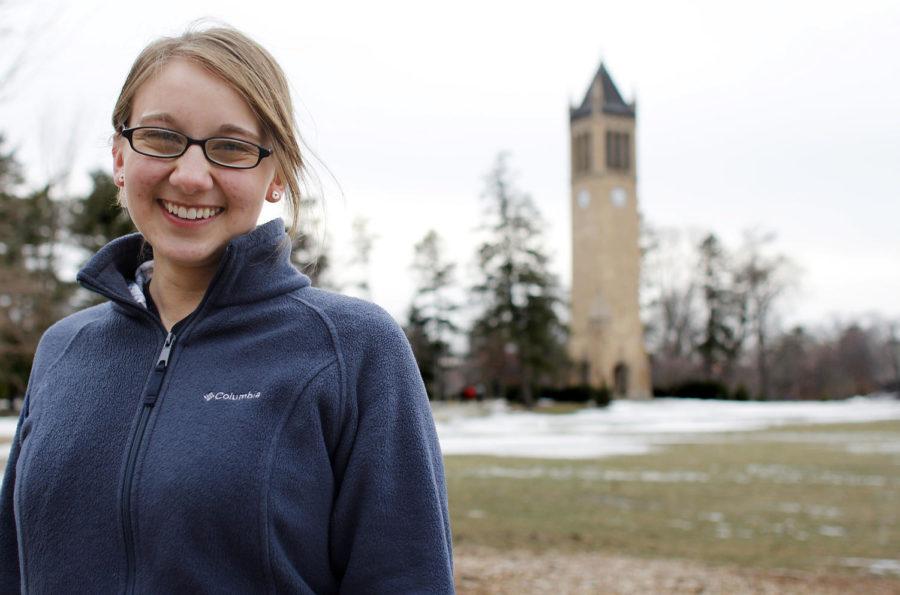Pay less, start small, still attend Iowa State
Photo: William Deaton/Iowa State Daily
Sarah Anderson, freshman in culinary arts at Des Moines Area Community College, decided to go to DMACC before coming to ISU for many reasons. One of those reasons was finances.
February 11, 2013
Iowa State offers community college students across Iowa the opportunity to get involved without attending Iowa State.
On average, community college students pay less, have smaller class sizes and can have the same privileges as an ISU student.
Based on a 12-credit term, the average cost of tuition and fees for community college resident students is $312.74 less than ISU tuition and fees, according to the Iowa Department of Education’s 2012 Tuition and Fees Report and Iowa State’s 2011-2012 Fact Book.
“What we offer them is the ability to take the same classes that they would be taking normally at Iowa State, reduced tuition rate [and] smaller class sizes,” said Laurie Wolf, executive dean of students of Des Moines Area Community College.
Sarah Anderson, freshman in culinary arts at DMACC, said going to DMACC was good to get used to “college-type classes.” She also shared why going to DMACC first helped her prepare for when she transfers to Iowa State for hospitality management.She shared why going to DMACC first was better for her.
“One: money. It’s a lot cheaper to go to DMACC,” Anderson said. “The classes at DMACC are smaller, which I like a lot.”
DMACC provides Iowa State with the most transfer students, said Maura Flaschner, program coordinator in admissions at Iowa State.
“The largest population in APP (Admissions Partnership Program) is from DMACC also,” said Eric Merten, enrollment services adviser in admissions at Iowa State.
Students involved in the program are given two academic advisers: one from Iowa State and one from DMACC. The advisers work with the student to help find classes that will transfer to Iowa State and help through major changes.
“It’s a great opportunity for students in a lot of ways,” said Robert Denson, president of DMACC.
Any student from any community college can be involved in the program and obtain most of the benefits of an ISU student at no cost while going to a different college.
Merten said the earlier the students get involved, the better because then they can get the benefits, find the classes they need to take and have a smooth transfer to Iowa State.
“The retention rates for [transfer] students that are in the Admissions Partnership Program are higher than students that are not,” Flaschner said.
Along with the advisers, Iowa State has given students the ability to see what their classes will transfer into at Iowa State through transit.iastate.edu.
“The good thing with transit is we have four-year schools on there,” Merten said. “Let’s just say the student took a couple courses at Grand View University while they are going to DMACC; they can look up that Grand View course and see how that’s going to transfer into Iowa State.”
One problem with the program is increasing the awareness of the program and getting students involved.
“I think our biggest challenge is getting students aware of the program,” Denson said. “As soon as they are [aware], it doesn’t make sense not too. I mean it’s all benefit and no burden.”
To get in contact with the Admissions Partnership Program, talk with a community college adviser and fill out the application. Then, when ready to transfer to Iowa State, apply for admission.
“I know for a lot of people it’s better to go to DMACC because it’s cheaper but they still want to do a four-year program,” Anderson said. “So it’s nice having the program to link it together.”

















